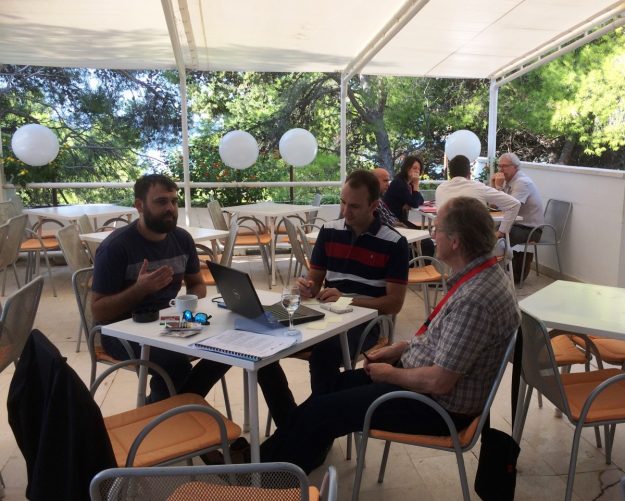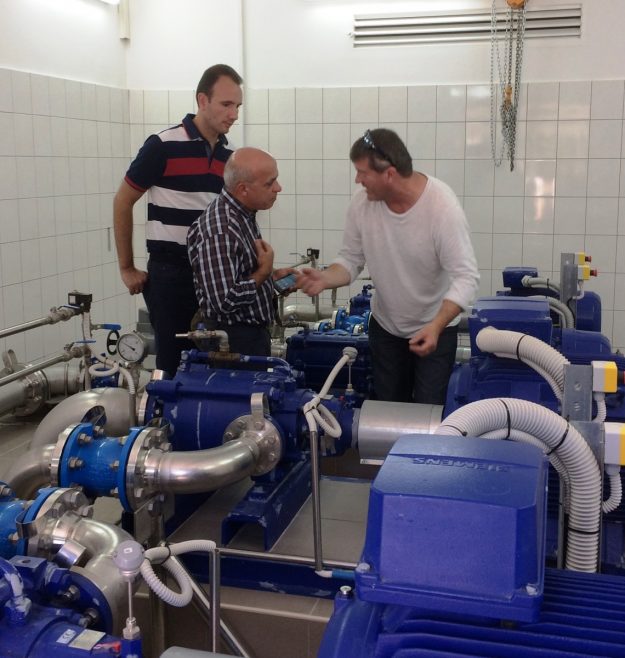There I was on the island Vis far out in the Croatian archipelago, surrounded by beautiful turquoise water to participate in a workshop about water shortage on small European islands arranged by the Water Saving Challenge Project. Once again the same ingredients; a wickedproblem, a diverse group of knowledgeable actors and the tension between holistic ambitions, and specific and localized solutions – they seem to attract my attention. Collaboration, cross-sectoral dialogues and broad participation are argued for as key measurements in almost all sustainable development policies. This seems logical given that the present complex challenges require combination of a diversity of knowledge, and multi-scale and multi-sector approaches. However, I think we have all been participating in too many workshops, discussing challenges, barriers and potentials, with a nagging feeling that it is not enough for the needed societal transformation. I was curious to find out if the workshop at Vis could be different.

The setting and process leadership are keys for successful collaboration and learning
Shortage of water is one symptom of our inability to handle water as a wicked problem, which has become an everyday reality for the inhabitants on many small islands. The task for the group of islanders gathering on Vis in September was to identify strategies to re-match water use with water availability but without losing sight of other important values such as a viable tourism providing jobs and income or local food production. What new ways of thinking, organizing and doing are needed to transform the water governance and how can the islands help each other?
Our process leader Christian Pleijel from the Kökar Island in Åland, works at KTH Executive School and is also the vice president of the European Small Islands Federation, used two tools to facilitate the discussions. The Ishikawa fish bone is designed to identify causes building up to a certain effect – in our case to identify all aspects of importance to achieve a water saving effect. The fishbone was combined with a method for parallel thinking by the use of six thinking hats developed by Edward de Bono. The thinking hats is a way to look at a certain issue from one direction at a time – the white hat as fact based and neutral, the red hat emotional, the black hat cautious, the yellow hat optimistic, the green hat creative and the blue hat organization. I had not before experienced these tools and looked forward to learn more about their potential.
However, what I soon discovered is that these are just yet another set of tools and with many similarities with tools that I have used or experienced in various collaborative processes before. It is not the tools that make a workshop contributing to real learning and change, it is the setting in which they are operationalised. What made this workshop a collective learning about island water saving was the stage, the actors and the process leader that used the tools.
The stage was very carefully designed based on extensive field studies on each of the eight islands represented. These field trips were as much about investigating the present water situation on respective island, as they were about establishing relationships and building trust that enabled the islanders’ engagement in the knowledge exchange and their support of a collective learning community. Furthermore, the stage is not just about what happens in the sessions which usually have a clear structure, roles and goals, but what happens in-between the sessions, during field-trips, coffee breaks and dinners. This is when new relationships are established that are necessary for future remote collaborations to be successful.

The importance of the space between sessions in a workshop. This is when relationships are built and long term learning partnership can start. A much appreciated visit to the Vis Island water center.
The actors also need to trust the process leader and each other in order to fully contribute to the joint process – the workshop play. Christian is himself an islander with personal experiences about what it means, combined with a long career working with people, leadership, innovations and businesses. In order to address wicked problems a diverse set of knowledge needs to be combined, demanding the process lead to be like a chameleon when interacting with this diversity. Like a director of a play you need to know when to start, stop, go back, fast forwarding by tweaking the tools so they are as purposeful as possible in relation to the process dynamic.
In the end fish bones covering many aspects of the water saving challenges on each island was drawn and the participants had been cautious, creative and emotional along the way with a strong foundation in facts and possible interventions in terms of governance. But, most importantly it was decided that this workshop was just the beginning of a more long-term exchange between the islands and that they will become learning labs to support a larger network of islands in the future.
What I bring with me from the three days with great islanders from all over Europe is that a workshop that enable not just knowledge exchange but real learning, needs to be carefully designed as part of a larger setting and requires deep skills in how to set a stage, encourage actors and use the right tools in the right moment. This might be common sense in other sectors but within sustainable development there is a clear need to highlight and develop skills in process design, leadership and facilitation so that we can move away from disappointing efforts of collaboration into meetings that enable societal transformation.
/Sara Borgström
Assistant Professor, Strategic Sustainability Studies
KTH Royal Institute of Technology
Read more about this project linked to KTH and KTH Executive School here.
Original the blogpost was published at kth.se.

